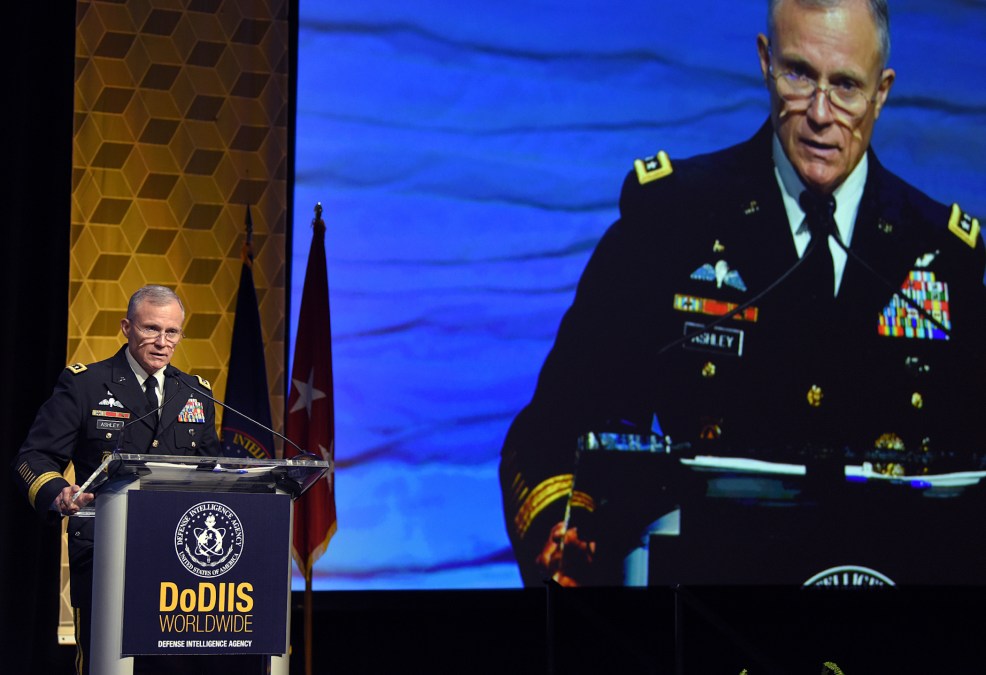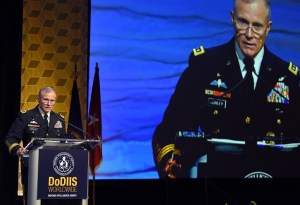DIA aims to be more inclusive of allies, partners in MARS system

Defense Intelligence Agency leadership has grown tired of the limitations of the proprietary systems and information labeled NOFORN — military-speak for “no foreign nationals,” a type of classified material that can’t be shared with allies and other coalition partners.
“Take the words ‘proprietary’ and ‘NOFORN’ out of your lexicon — we cannot do that,” Lt. Gen. Robert Ashley, DIA director, said Monday in Tampa, Florida, at the annual DoDIIS Worldwide Conference. “We have got to be able to share with our allies and partners.”
To combat those limitations, DIA is developing its next-generation data environment MARS, short for Machine-Assisted Analytic Rapid-Repository System, with its allies to foster better information sharing. The system, built around advances in cloud computing, machine learning and artificial intelligence, will form the basis for more quickly delivering better intelligence information to coalition warfighters in combat.
But rather than delivering a system to allied partners, who will also depend on the sharing of information within that system, Ashley said with MARS, DIA has brought in its closest allied partners at the engineering level to help build it.
“As we look at the basic tenets and the foundation of MARS to some of our closest partners what we’ve done is we said ‘This is how this is going to operate. What do you have in your infrastructure now? I need to share some basic information, some data with you so you can start working at the engineering level. Oh, by the way, all those machine learning apps, other things, you may have a better mousetrap then the one I’m working on,’” Ashley explained.
DIA CIO Jack Gumtow similarly has recently been driving defense intelligence systems away from the limitations of NOFORN classification.
“We don’t fight as an individual nation,” he said. “We fight as a coalition of warriors wherever that happens to be. We work together as a coalition. I can’t even separate that from my being.”
He said Monday that since taking over as CIO last summer, he’s revised the Joint Worldwide Intelligence Communications System (JWICS) security classification guide, red-lining NOFORN throughout the document.
Doing so, Gumtow said, doesn’t put the nation any more at risk. “If our partners find out we have a problem on a JWICS node somewhere, have we compromised national security? Guess what — we didn’t. They’re our partners.”
“It’s just a mindset change that we all have to adopt that we’re not in this little bubble ourselves,” he said. “We have to work in this partner coalition, and it just plain-out makes sense.”




